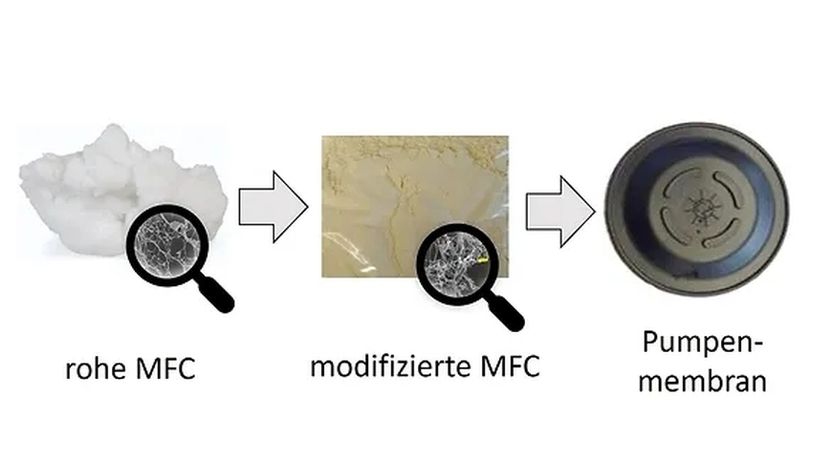Rubber production: Renewable cellulose-based fillers
New process brings together the worlds of cellulose and rubber
Advertisement
The substitution of petrochemical materials with those obtained from renewable raw materials is an important step towards increasing sustainability. In just two years of intensive and open collaboration between Empa and the Datwyler Schweiz AG as part of an Innosuisse project, a process was successfully developed that brought together the worlds of cellulose and rubbers.

It is a challenge to blend microfibrillated cellulose (MFC) with hydrophobic, i.e. water-repellent, rubbers.
Empa / Daetwyler Schweiz AG
Materials derived from plant cellulose are promising candidates for this application area. They are renewable, abundant and have a low environmental impact. In the rubber industry, microfibrillated cellulose (MFC) is receiving a lot of attention due to its high stiffness, the morphology of its fibrils, its low density and its mechanical properties. Thus, it has a high potential to improve the properties of rubber compounds.
However, it is a challenge to blend MFC with hydrophobic, i.e. water-repellent, rubbers. Together with its development partner Empa, Daetwyler has developed an industrial process for the surface modification of MFC to solve this challenge. Initial trials involved replacing petrochemical aramid fibers with modified MFCs.
The results show good compatibility between the MFC filler and the rubber matrix with strong reinforcing effects, even better than those achieved with conventional petroleum-based aramid fibers. The development of these novel fillers will be an important step towards increasing the sustainability of rubber products such as pump diaphragms.
Two years from research to industy implementation
In just two years of intensive and open collaboration between Empa and the Datwyler Schweiz AG as part of an Innosuisse project, a process was successfully developed that brought together the worlds of cellulose and rubbers. In this short time, it was possible to cover the entire arc from research to industrial implementation.
"This project is a very good example of how valuable Innosuisse's support is for such successful innovation projects, which not only strengthen and economically advance the companies themselves through novel products and processes, but ultimately also the entire location of Switzerland", says Empa researcher Thomas Geiger.
Most read news
Topics
Organizations
Other news from the department science

Get the chemical industry in your inbox
By submitting this form you agree that LUMITOS AG will send you the newsletter(s) selected above by email. Your data will not be passed on to third parties. Your data will be stored and processed in accordance with our data protection regulations. LUMITOS may contact you by email for the purpose of advertising or market and opinion surveys. You can revoke your consent at any time without giving reasons to LUMITOS AG, Ernst-Augustin-Str. 2, 12489 Berlin, Germany or by e-mail at revoke@lumitos.com with effect for the future. In addition, each email contains a link to unsubscribe from the corresponding newsletter.
































































